Top 10 Board Games for 2 to 4 Players
At Fun Diego Family we love board games. Our library of games numbers into the hundreds. This is our list of the top 10 board games for 2 to 4 players that are easy to learn and can be played by the entire family.
During the COVID-19 stay-at-home order, board games are a great way to pass the time. In developing this list we focused on games that can be played by anywhere from 2 to 4 players. In addition, we have focused on games that are simple to learn and can generally be played in an hour, or at most 90 minutes.
There are definitely more intense games available. However, for a family together in these stressful times we are focusing on games that are not ultra competitive and more on the relaxing side. In addition, we tried to find games that are likely to be available during the spring/summer of 2020.
This top 10 list is not in any particular order. Different games will appeal to a different audience. Our goal is to give readers a selection of fairly diverse products.
Most of the games on our list should cost under $60. It should be noted that board games are printed in small runs and go in and out of stock on a frequent basis. Sales will also popup that can significantly reduce the price.
The majority of the games on the lists have expansions. Expansions can add to the fun but are not necessary to enjoy the basic game. The only warning is to be careful and make sure you are ordering the base game and not an expansion that requires the base game. Most expansions are NOT standalone products. They require the base game.
All these games are competitive games that pit players against each other. There is another category of games that are called cooperative games. In these games players work together to defeat a common goal.
Ironically, the most popular cooperative game of the past decade is Pandemic. In this game players work together to fight the spread of global diseases. For many people this probably hits too close to home.
Of course, there are many other cooperative games. However, we have not included them on this list because in my experience the best ones tend to be very complicated. Usually they involve one or two players telling everyone else what to do. Our focus is on games that children from ages 8 and up can play with their parents (or grandparents) on a fairly equal basis.
If you only have two players be sure and check out our guide to top 2-player games.
Jump Ahead To
Survive: Escape from Atlantis

Given the times it seemed appropriate to start with a game called Survive. In this game, each player has ten people they control (commonly called meeples). They are trying to rescue as many meeples as possible from a sinking island. As the island sinks survivors are rushing to get into boats and avoid sharks, whales and even sea serpents.
This game is a great deal of fun, but it is also the most cut-throat game on the list. Unlike other games on this list, players are actively harming each other (killing meeples). Only play this game with people that will not got emotional.
There are expansions that add dolphins, squids and more players. We only have the base game.
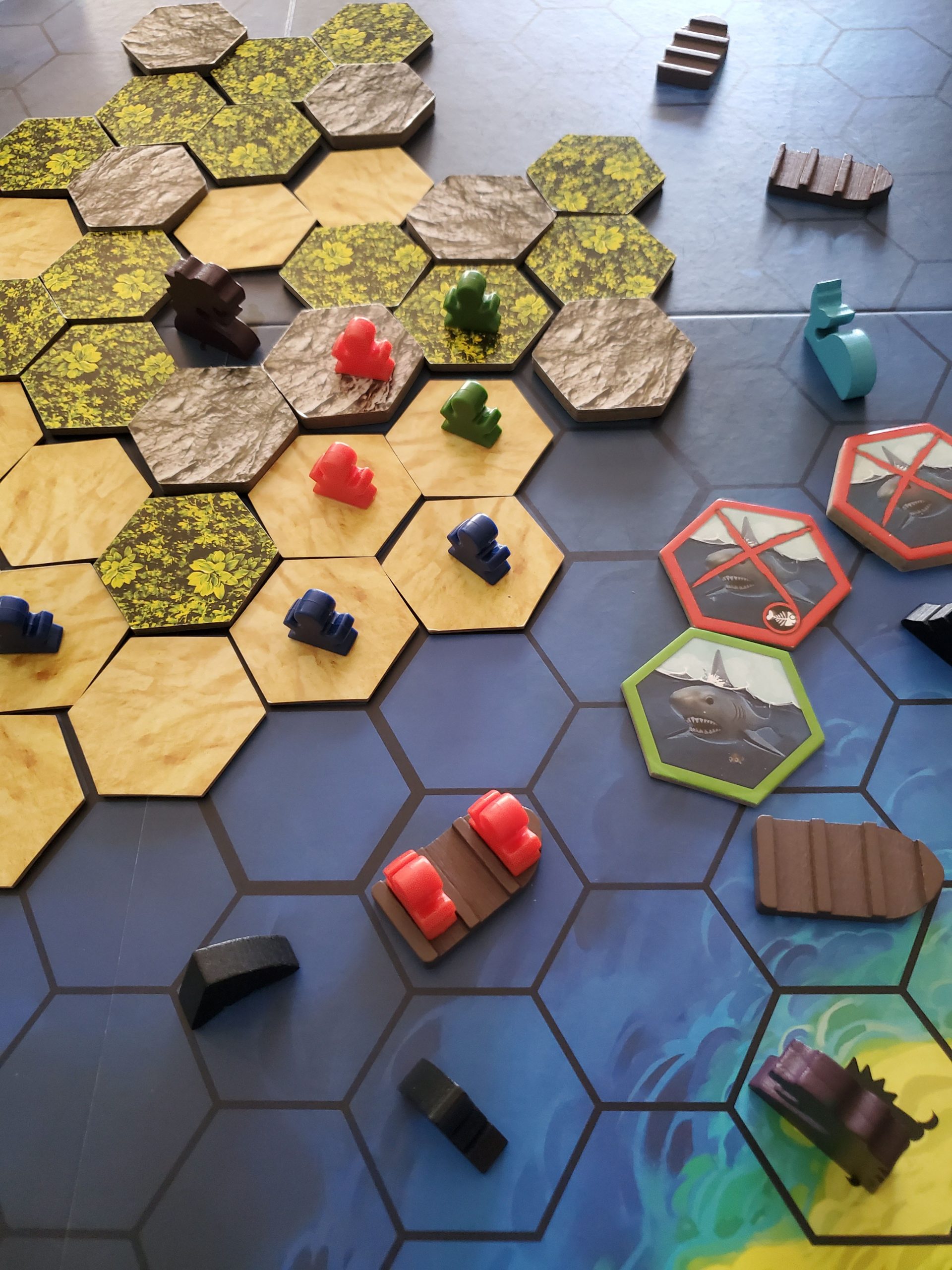
Carcassonne
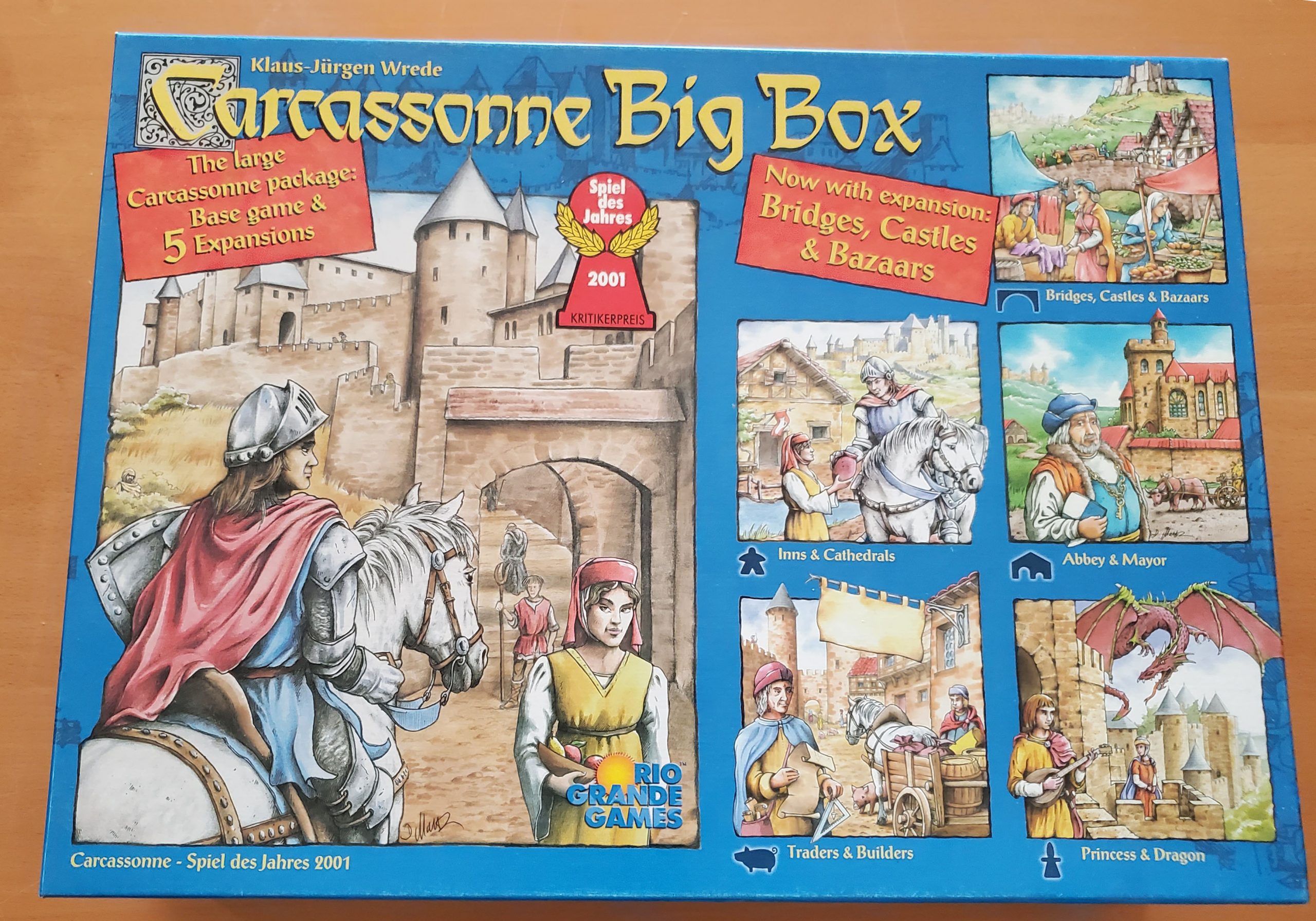
Carcassonne is a medieval city in France famed for its walled fortification. The game is a classic tile laying game that has been around for 20 years. The goal is to add tiles one-by-one to build a medieval town. Players add towns, roads, churches, and farms and place meeples to score points.
This game has many expansions that add all kinds of features. These include dragons and princesses, inns and cathedrals, bridges and much more. We bought the original game and liked it so much we bought the Carcassonne Big Box set. The big box set has the base game plus several expansions.. It appears there are several editions of the big box set, each containing different expansions. Personally I would look for the best price as each expansion can be added individually.
People love playing Carcassonne because each game involves building a unique town. When adding in expansions these towns can get huge, but the game will take much longer. However, this flexibility is part of what makes the game great. Our kids even enjoyed playing the game solo to build their own city.
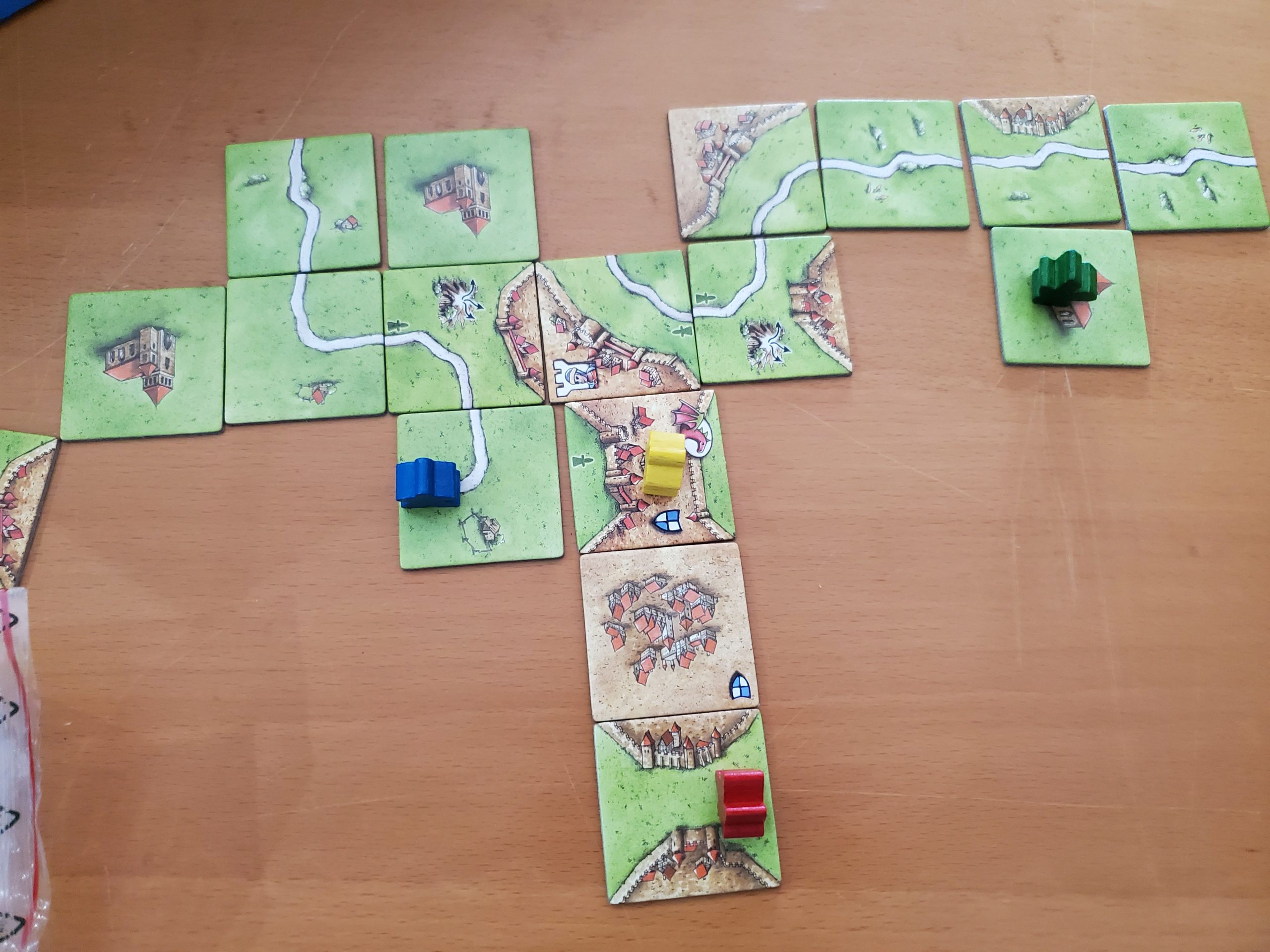
Azul
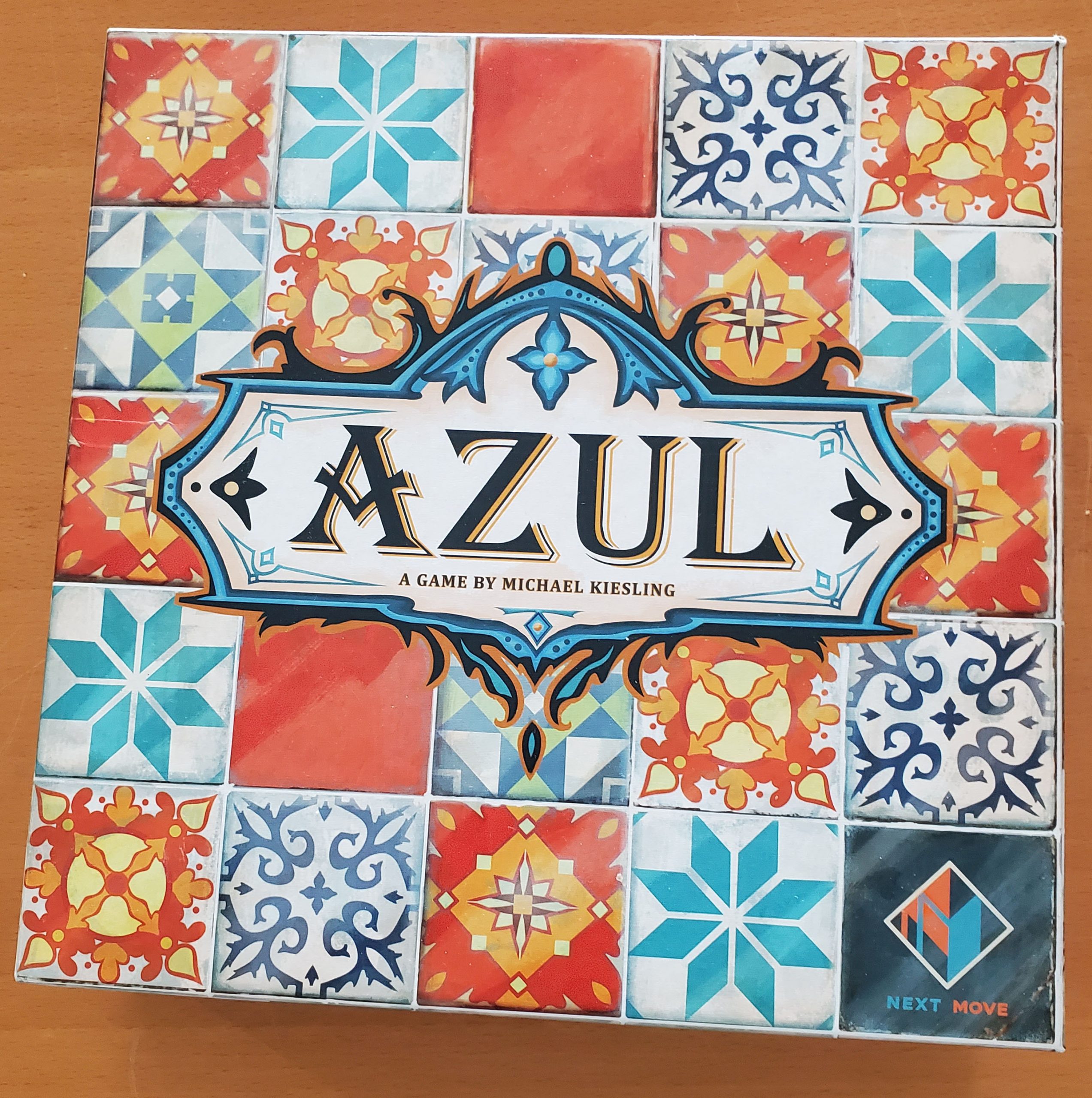
Azul is a tile-laying game based on Portuguese tiles called azulejoes. This is an abstract game that is simple to learn but can be a brain burner.
Normally I don’t like these type of games because they require too much concentration. However, Azul is different. It is only as competitive as you want to make it. Scores tend to be close and kids can often do better than adults.
I believe Azul is the only game on this list without an expansion.
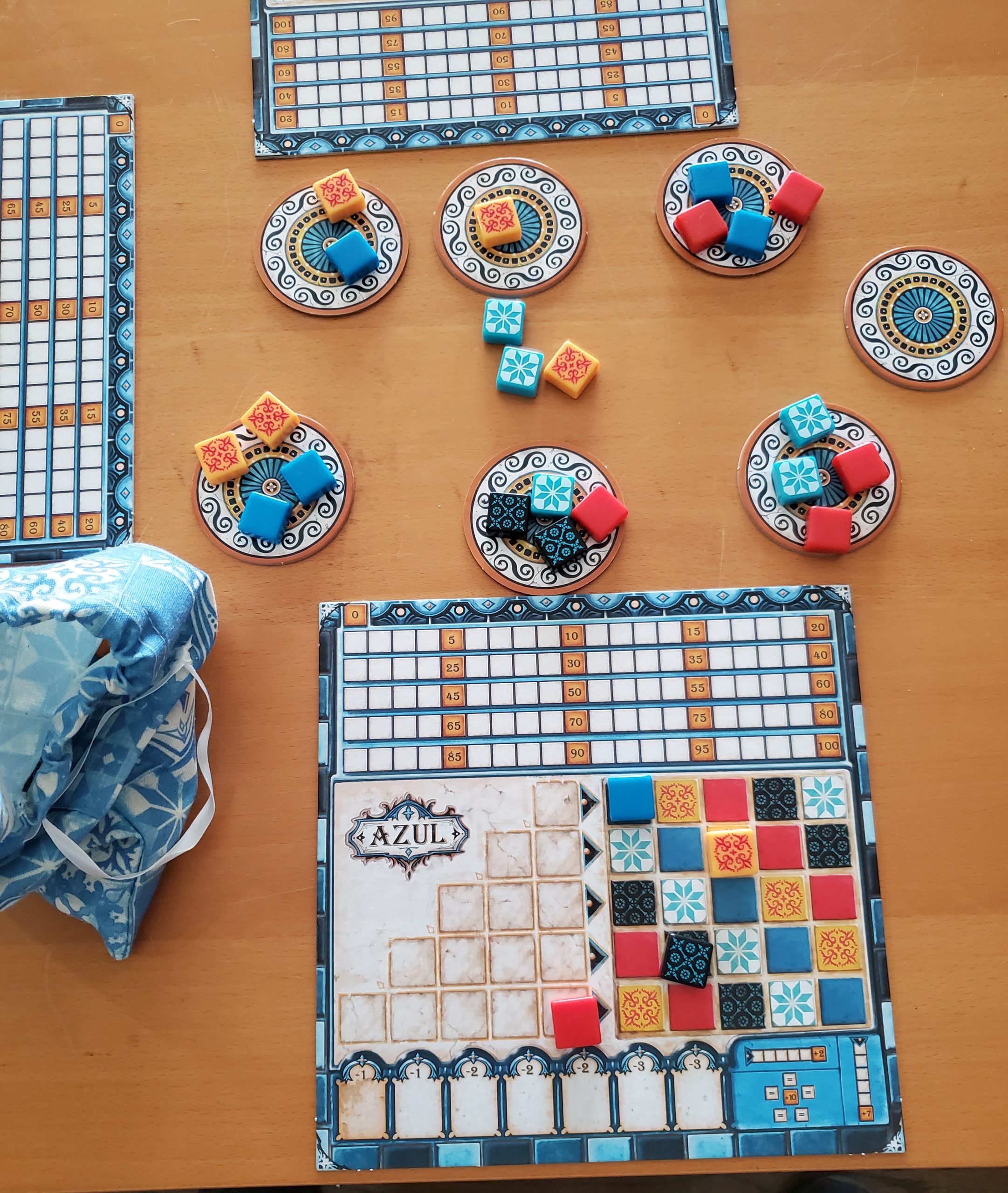
Splendor

If you are new to board gaming or want something quick and light, Splendor is probably the best choice. Almost everyone likes this game.
Splendor is also a great introduction to the concept of engine-building games. This is where you start off with limited resources and slowly buy more resources that allow you to build an economy.
In Splendor, each turn you pick from different colored gems. These gems allow you to buy more gems that become part of your permanent collection. The goal is to build a collection worth 15 points. Games almost always take less than half an hour.
It doesn’t sound like much, but this is the one game that everyone is usually willing to play. We have not bought any expansions.
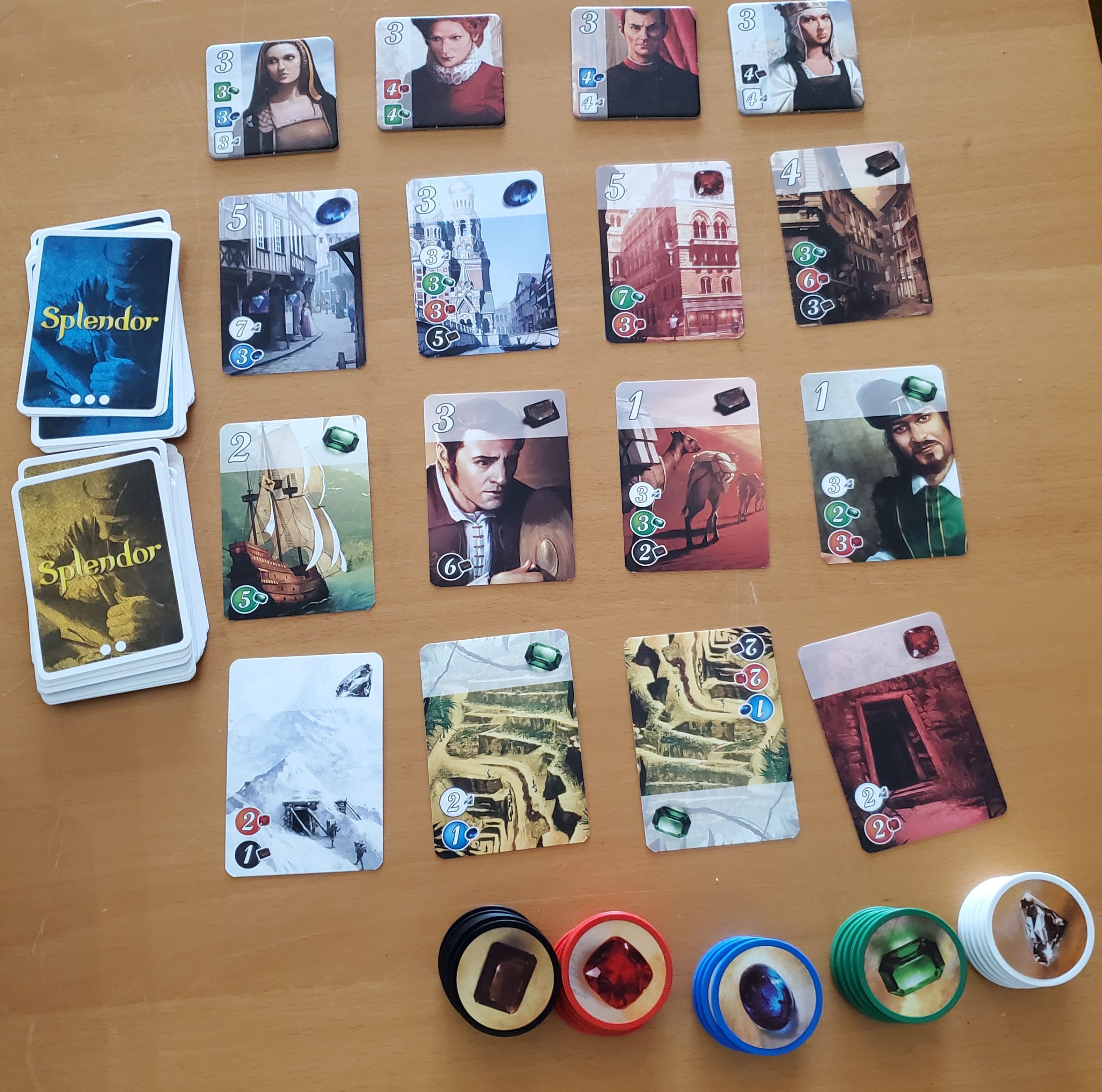
Dominion
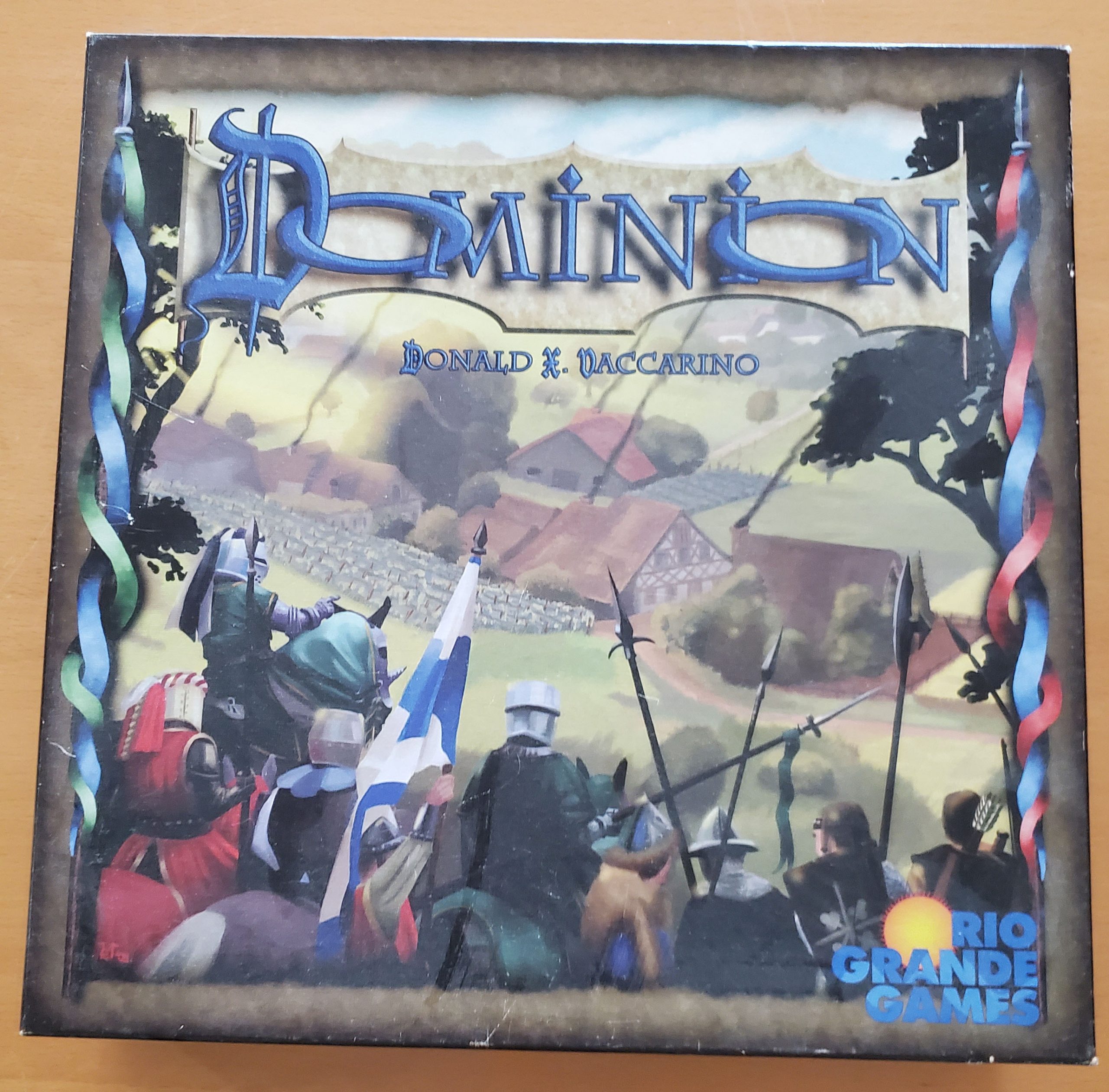
Dominion is like Splendor in that it is a short engine-building game. In this case, players are buying cards that they add to a growing deck of cards. Players start with only a handful of basic cards and buy cards to make their deck stronger.
The base game of Dominion comes with just cards. There are money cards, victory point cards and 25 unique cards, each with a different feature. However, in a given game only 10 out of those 25 cards will be used. Each game of Dominion will be completely different.
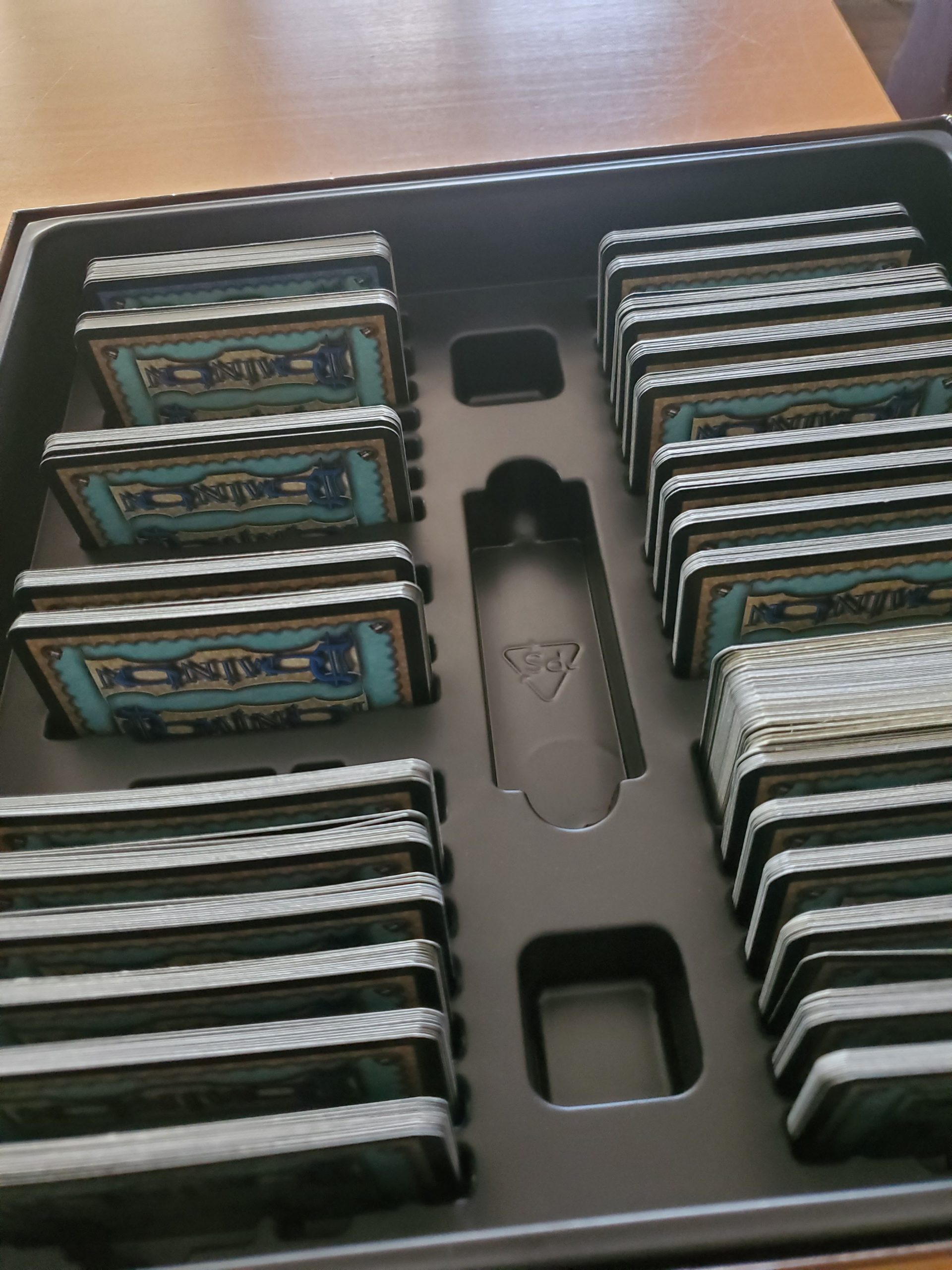
There are many expansions for Dominion that add more cards and significantly change the game. We only own Dominion: Seaside. However, I have tried most of the expansions online.
Overall this is a great game because you can really customize your experience by selecting which cards to use. Some cards are cutthroat towards other players. If you don’t like the cutthroat nature you simply leave those cards out.
Dominion is not a hard game to learn, but it is significantly more complicated than Splendor. Each card tweaks the rules in certain ways, so younger children can struggle with this game. That is especially true with the more complicated later expansions. On the plus side this is a game system that can grow with your family.
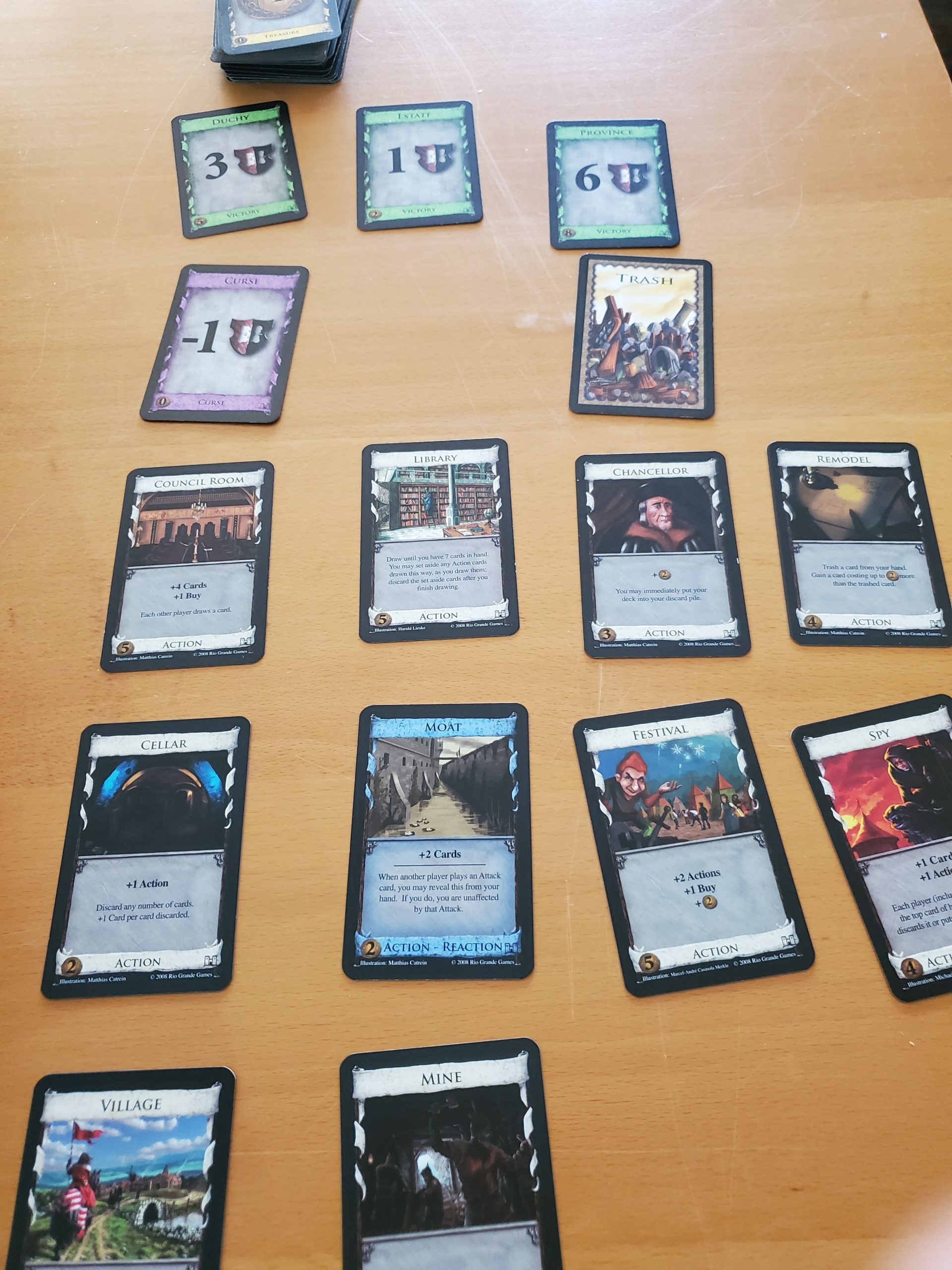
Ticket to Ride
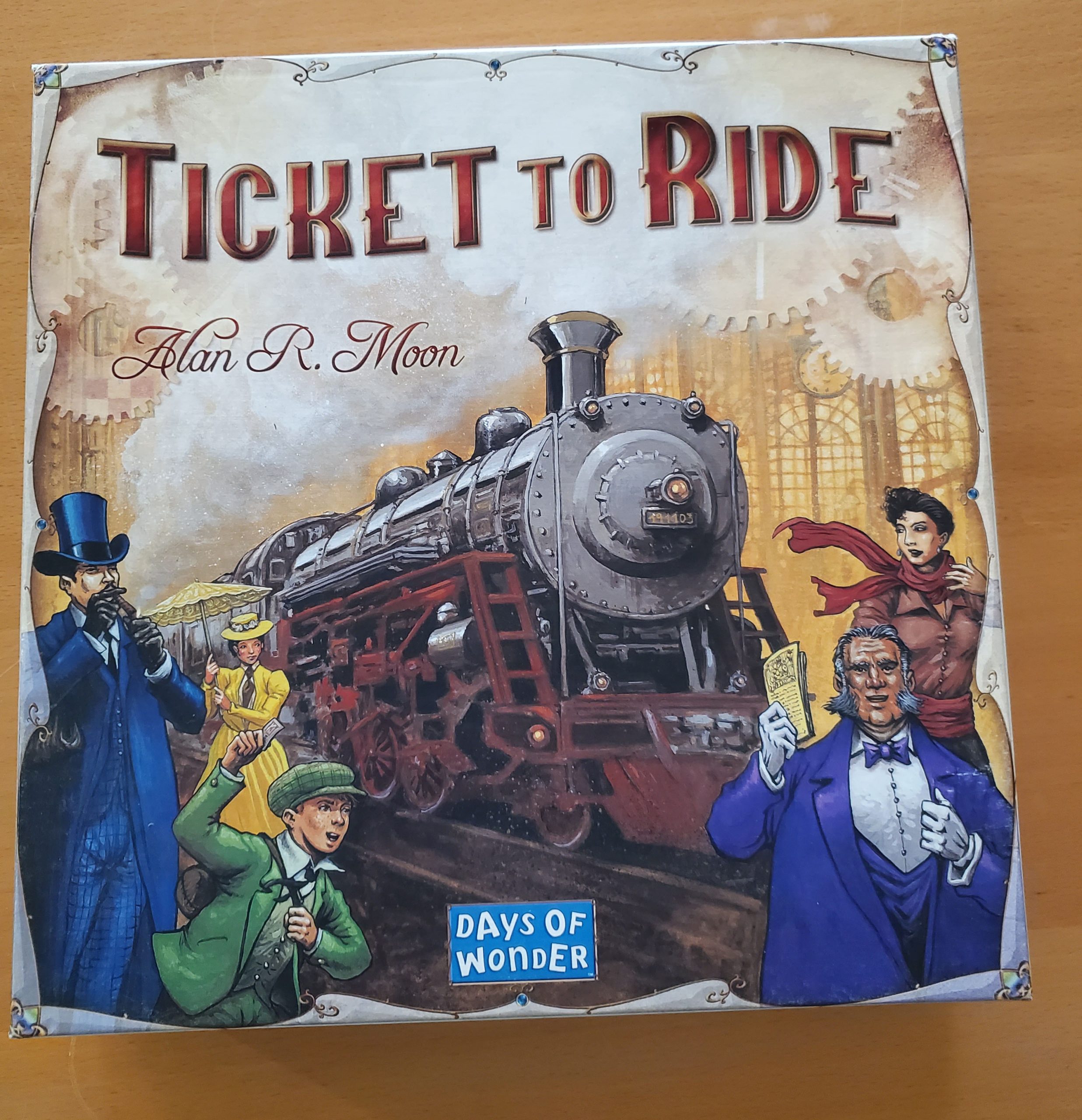
Ticket to Ride is the best-selling game on this list. The game is all about scoring points by laying train lines to connect cities on a map. Each player has a unique train color. Train lines also come in several colors that have no relation to individual players. Instead, players pick up colored train line cards. If a train line is 4 green trains long, players need four green cards to build that line.
This simple system has inspired all kinds of expansions, spin-offs and sequels. The basic game is played on a map of the United States. Most expansions not only add extra maps but they add additional rules and game play tweaks. Some of the Ticket to Ride games are full products in their own right. Others require the base game.
In addition to the base game, we own the standalone games Ticket to Ride: Europe and Ticket to Ride: Marklin, as well as and the Switzerland and Asia expansion maps.
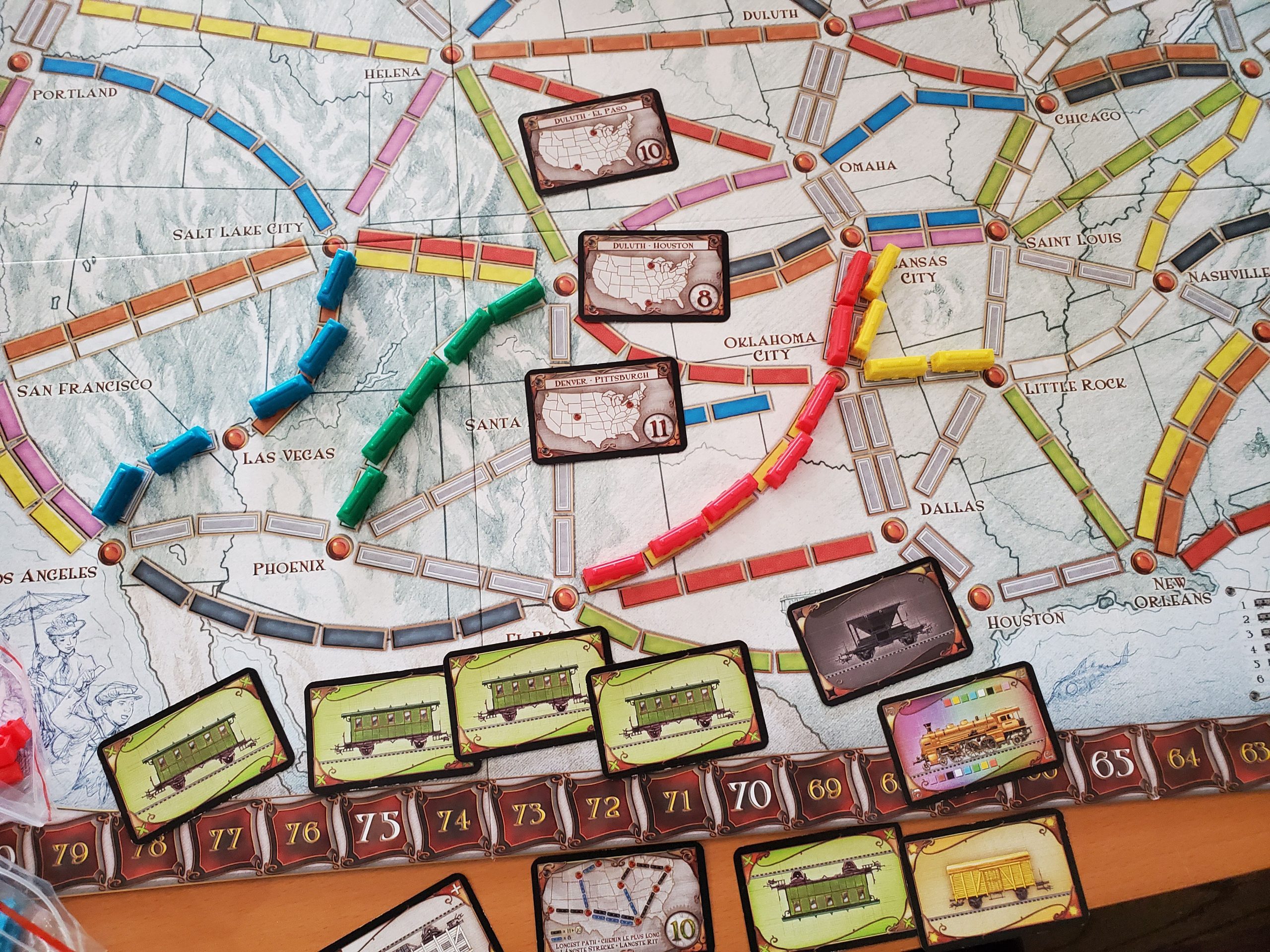
Imperial Settlers
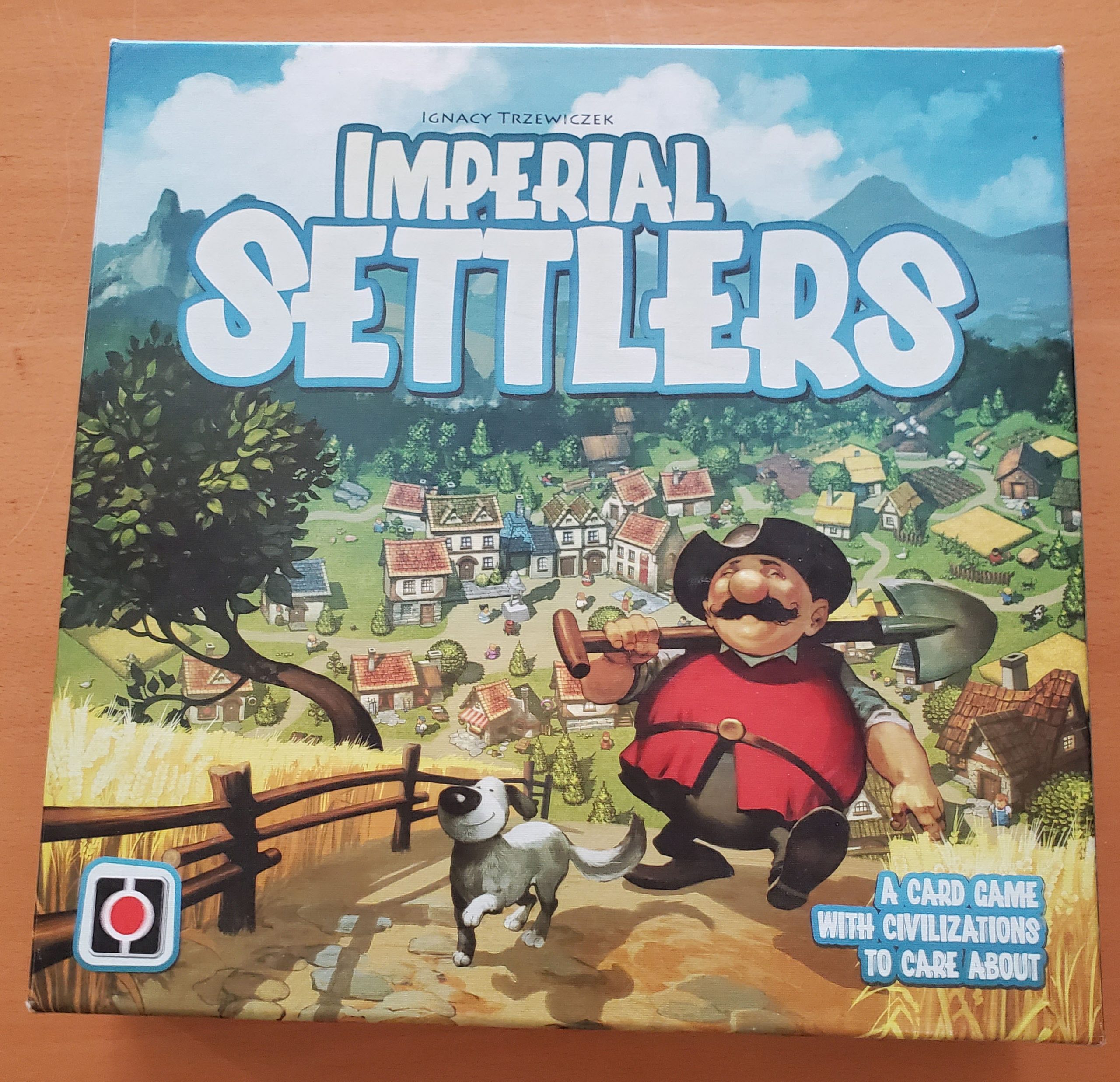
Imperial Settlers has a cartoon art style. However, it is probably the most difficult game on this list. The game is fairly short, but there is a lot going on and each player has different abilities. There are expansions available, but we only own the base game.
Imperial Settlers is a civilization building game. Players start as one of four factions, Barbarians, Romans, Egyptians or Japanese. Each faction comes with its own unique abilities and deck of cards. The goal is to build your civilization over 5 rounds by collecting resources that allow you to play cards that in turn will allow you to collect more resources and build bigger buildings.
The game can be difficult to teach new players. In addition, the choices of what to do with each card can seem overwhelming. However, if you want a more complex game for adults or older kids this is a great choice. It also has a solo mode which can be a great learning tool.
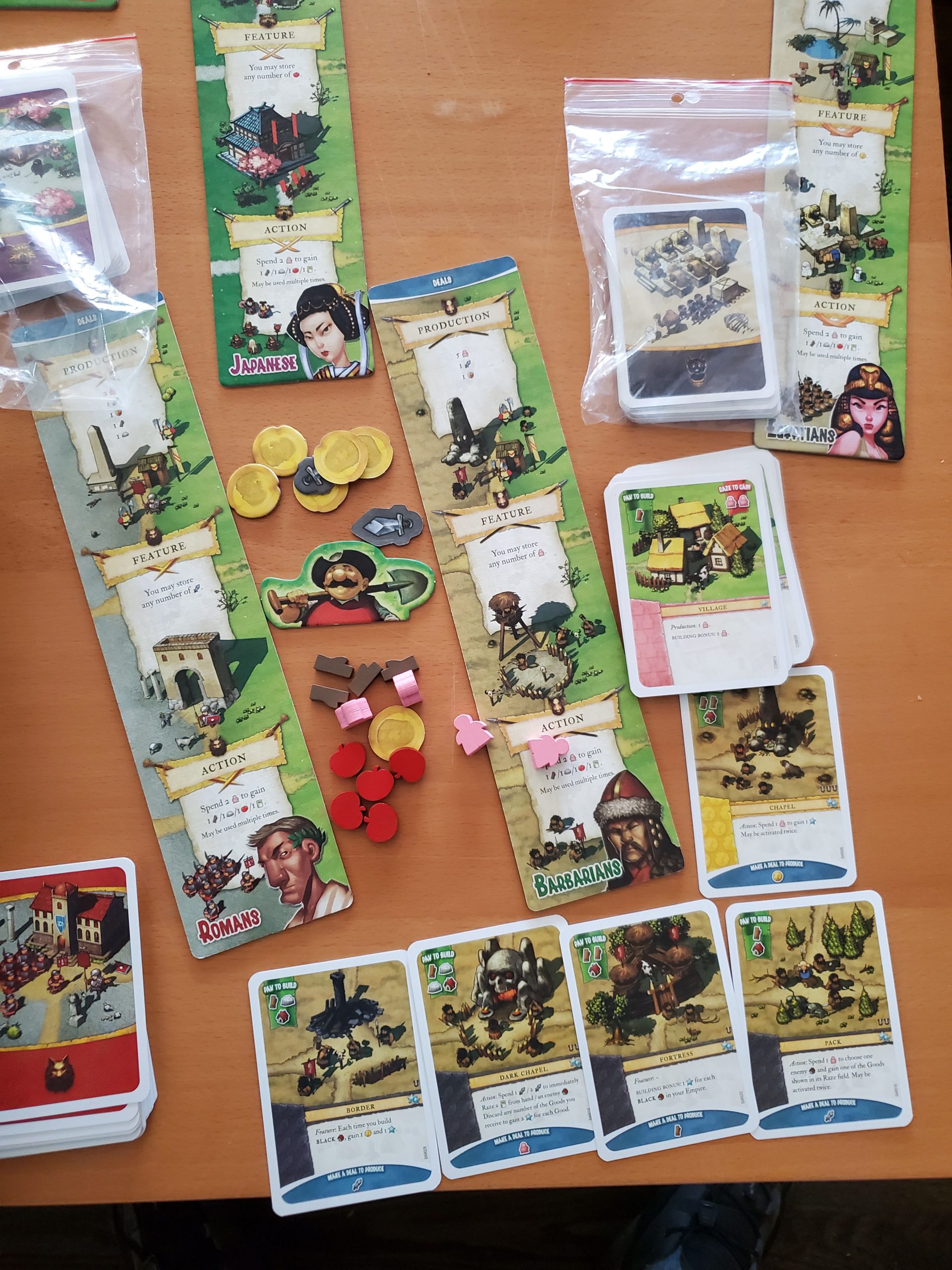
The next few games on the list are not as complex as Imperial Settlers, but take a little longer to learn than the first games on the list.
Concordia
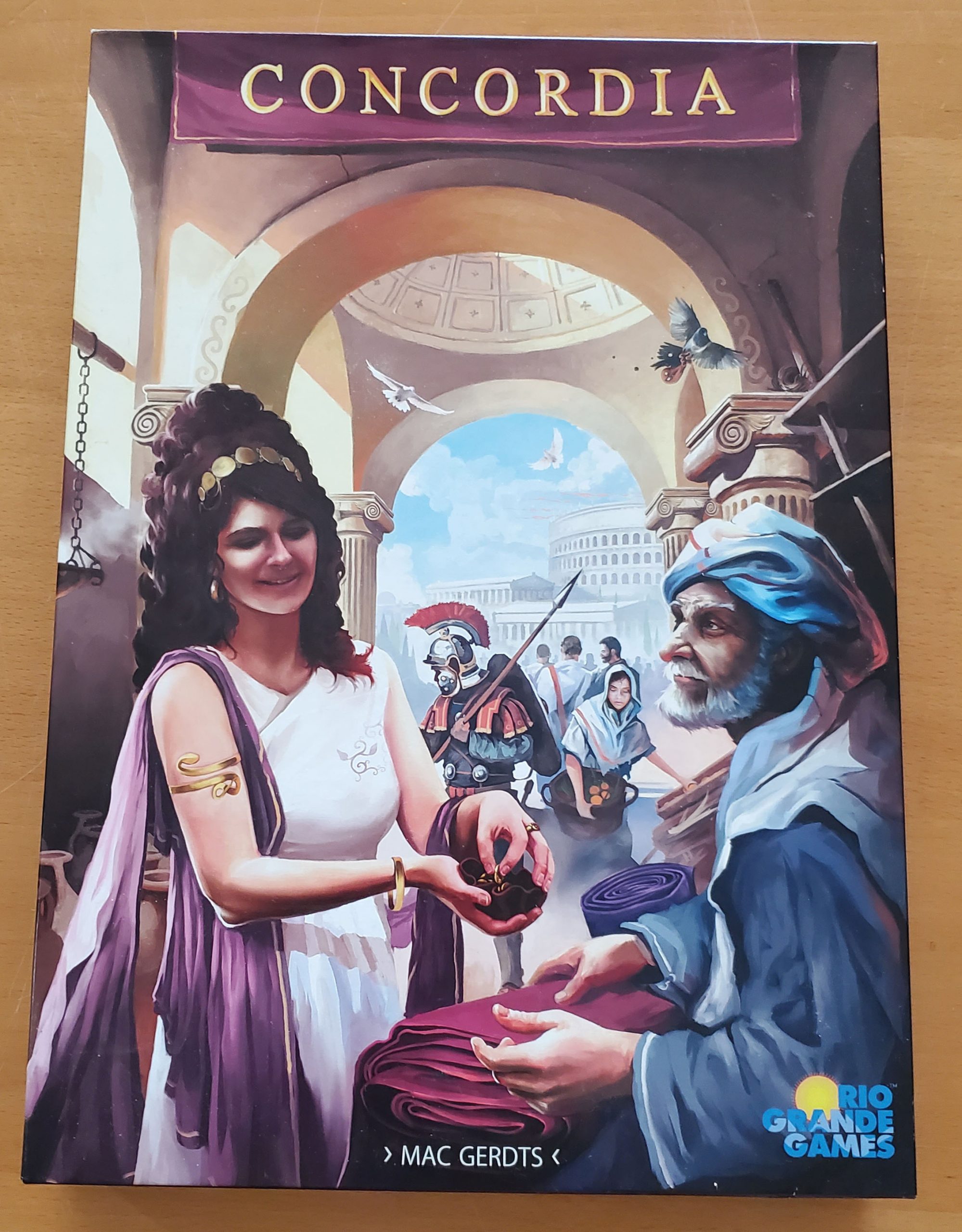
Concordia is a game about building trade routes in the Roman Empire. It is also a deck-building game where people buy cards that allow them to do more actions.
The goal is to send out colonists to different cities. Each city produces a unique good such as bricks, wine, cloth, food or tools. Of course some resources are more valuable than others.
This is a popular game because players are pretty much free to build their own infrastructure. The end game scoring is a little opaque. That is a good thing because it allows players to just focus on playing the game. Concordia is a game that gets better the more you play. However, new players don’t feel like they are getting slaughtered.
There are several expansions for Concordia. We only own the base game but will probably look to get the Concordia: Salsa expansion.
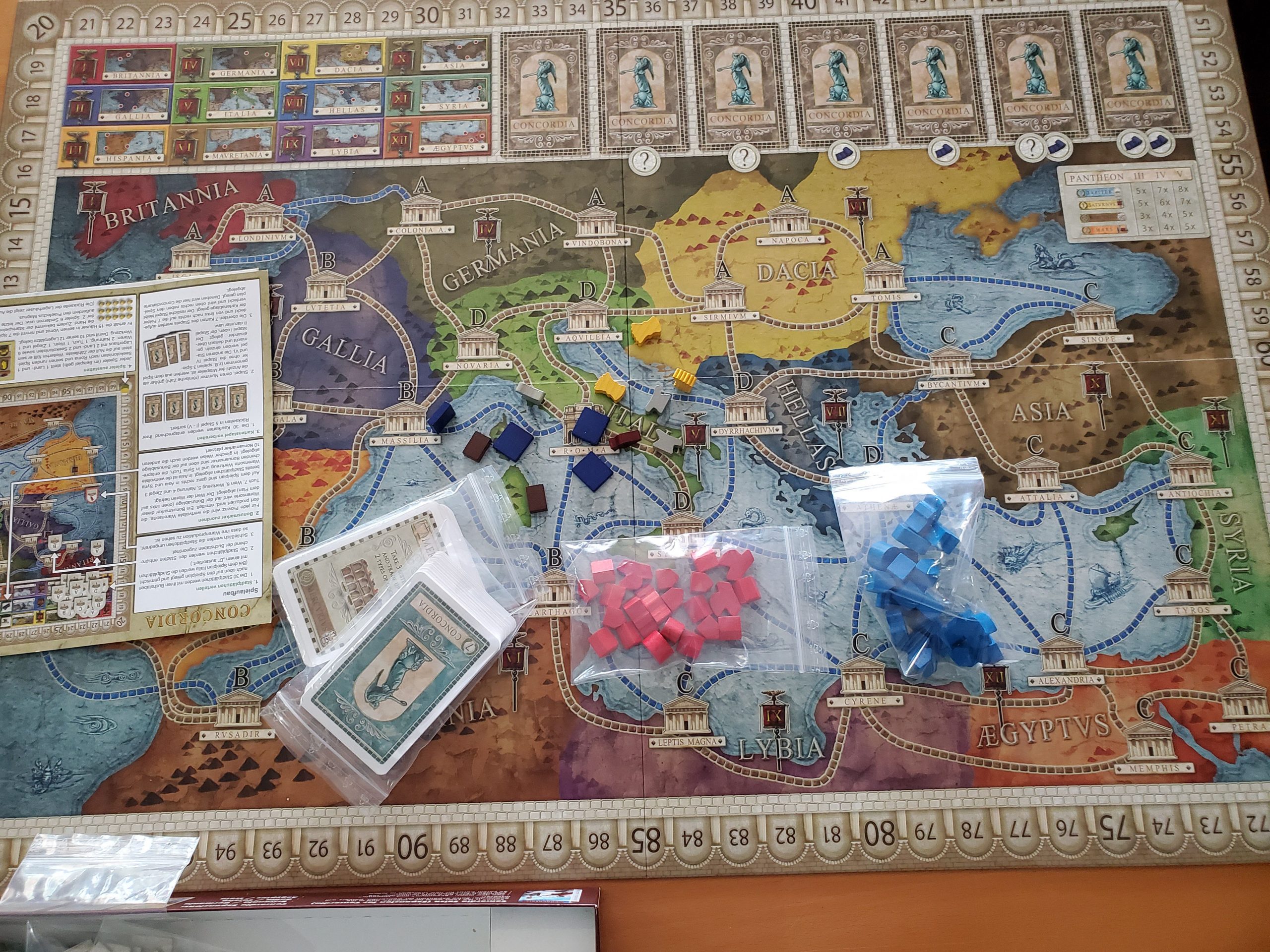
Takenoko
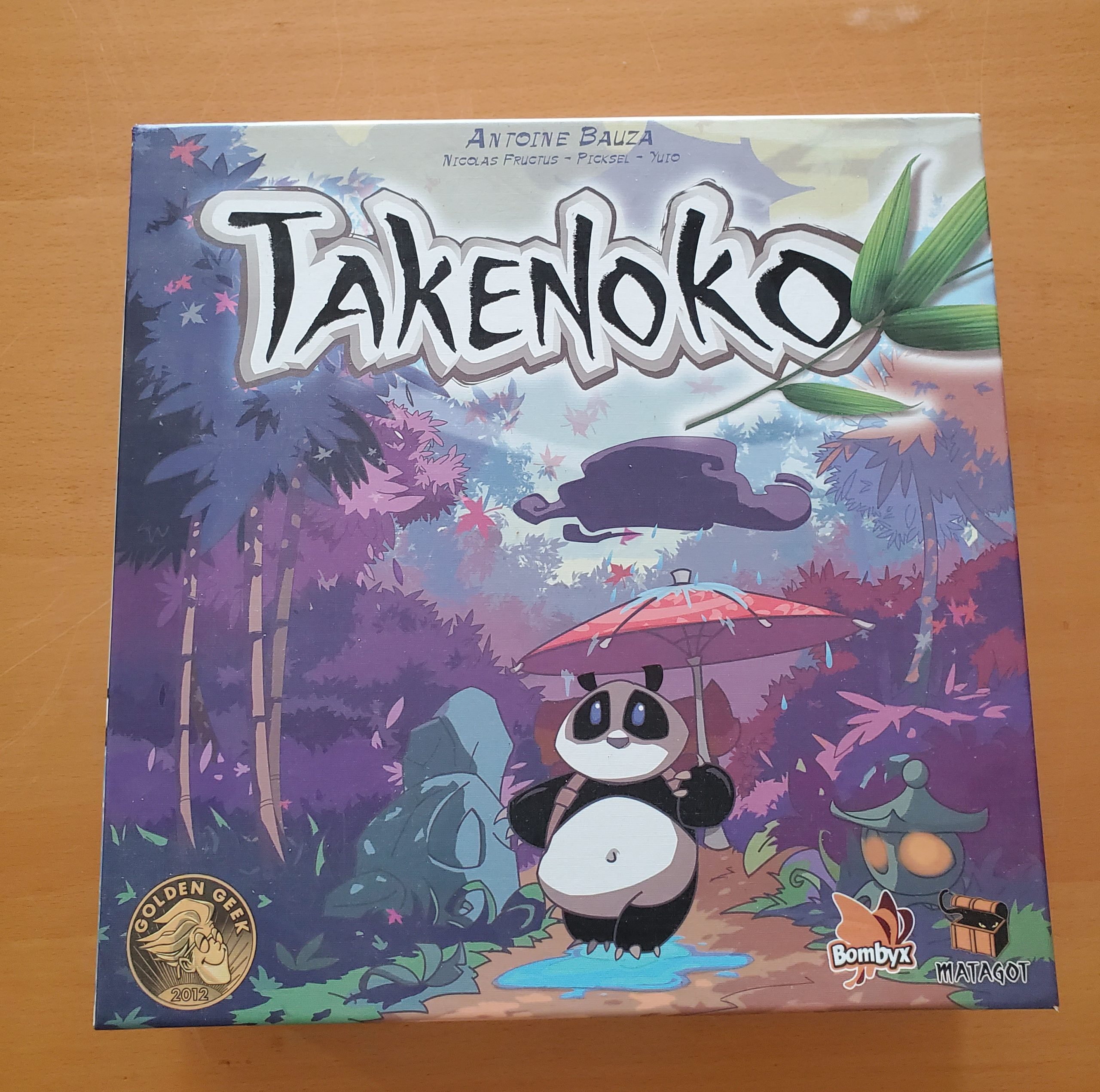
Takenoko is a Japanese themed game about growing a garden for a panda gifted to Japan from China. The goal is to build and irrigate garden plots that will grow different types of bamboo.
Like Carcassonne, Takenoko is a tile laying game. However, it is a little more on the complex side. This game has very colorful parts, including growing bamboo stalks. a miniature gardener and a panda. Younger gamers are likely to want to just dispense with the rules and build their own garden.
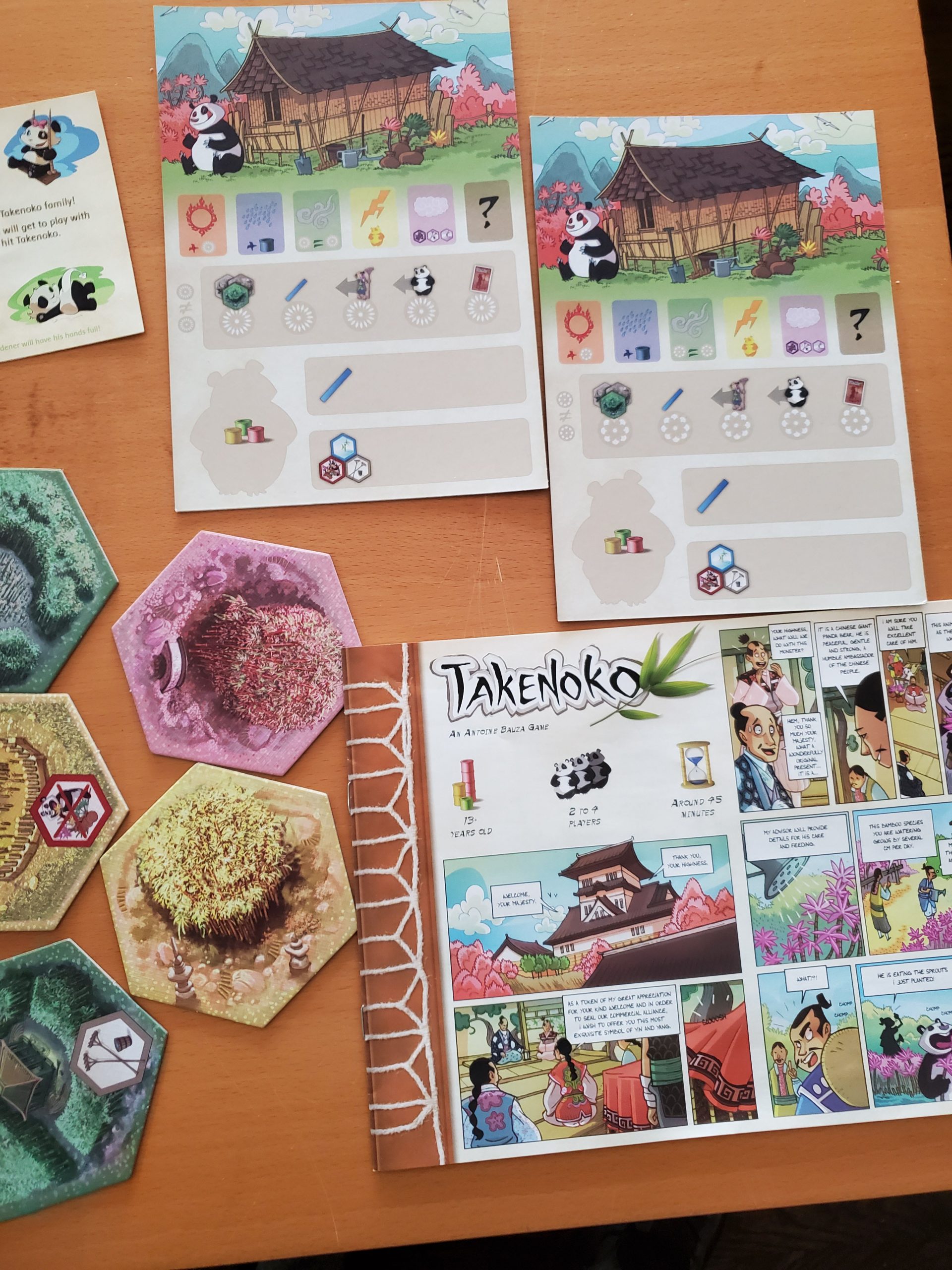
Takenoko is a great family game but it does take a little longer to learn. Once everyone understands the game it will flow much faster. We only own the base game.
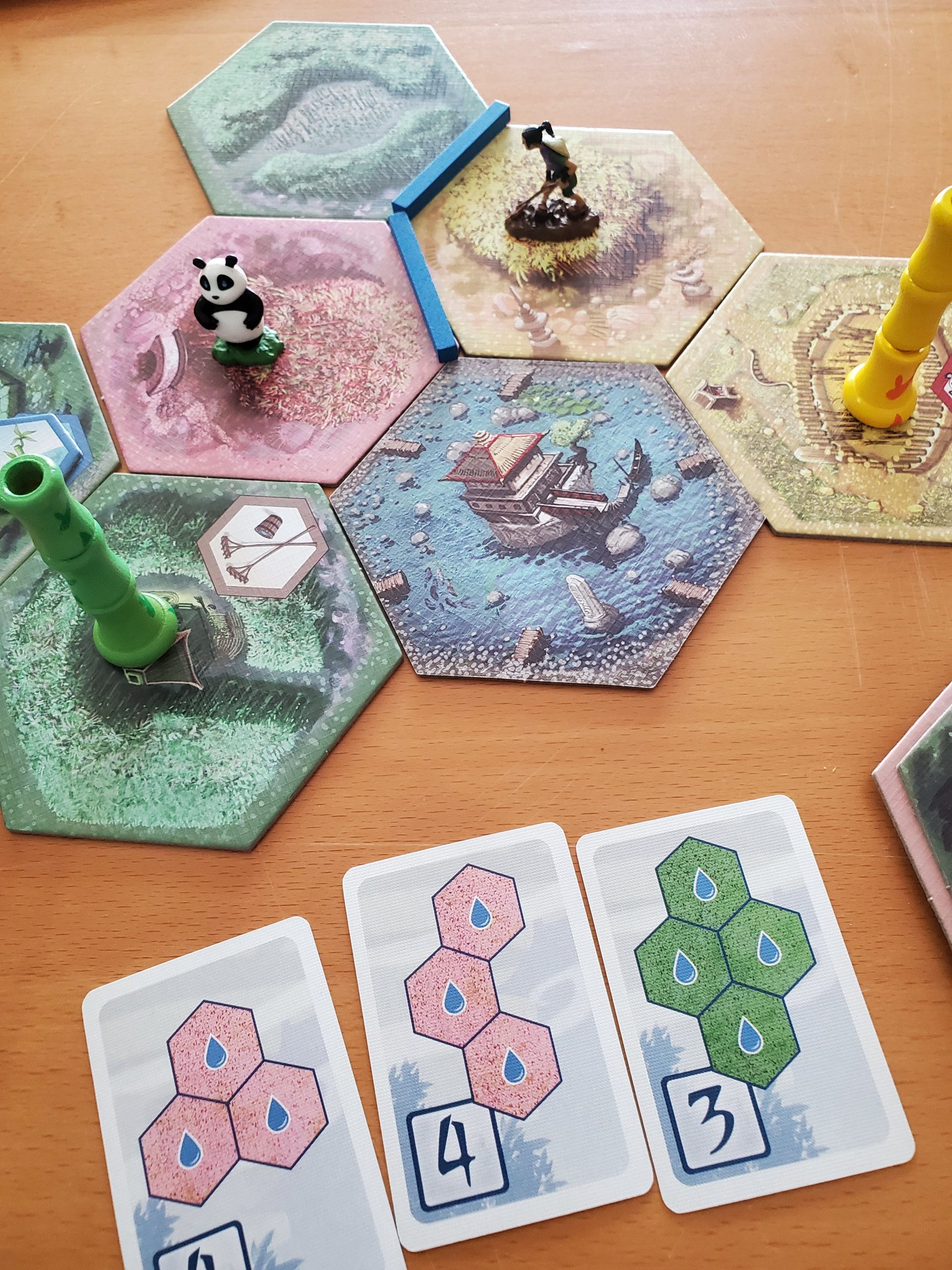
Wingspan
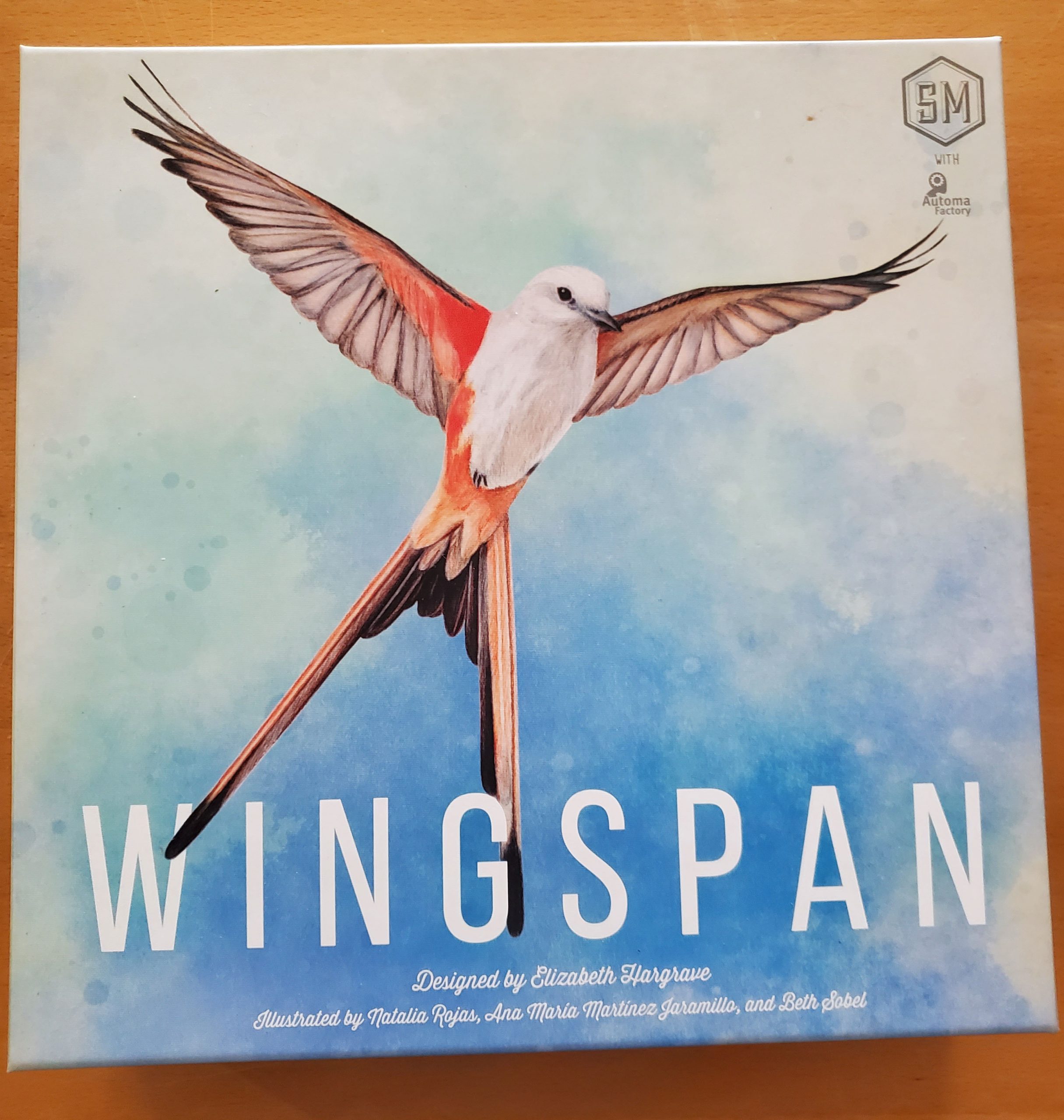
Wingspan is a new game that has become very popular. Normally it should cost $60, but when supplies run low the price can double.
The game is all about birds, a theme that may turn some people off. Nevertheless, Wingspan probably has the highest production value of any game on this list. Each player gets their own bird which represents a wildlife reserve. The goal is to attract as many birds as possible to your reserve. Each player’s reserve has three areas that attract different types of birds, a forest, wetlands and meadow
Much of Wingspan is card collecting and building an engine. You slowly add birds to your board and each bird has unique powers that allow you to collect more food, eggs and birds.
There are 140 bird cards in the base set of Wingspan. These are North American birds. Expansions (which we don’t own) add birds from Europe and Oceania. Each bird has its own abilities which would seem to make the game complicated. However, we have found it flows very smoothly after the first few rounds. The game comes with a walk through tutorial to get players up and running.

If you only have two players be sure and check out our guide to top 2-player games.
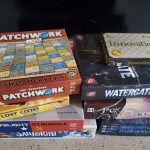
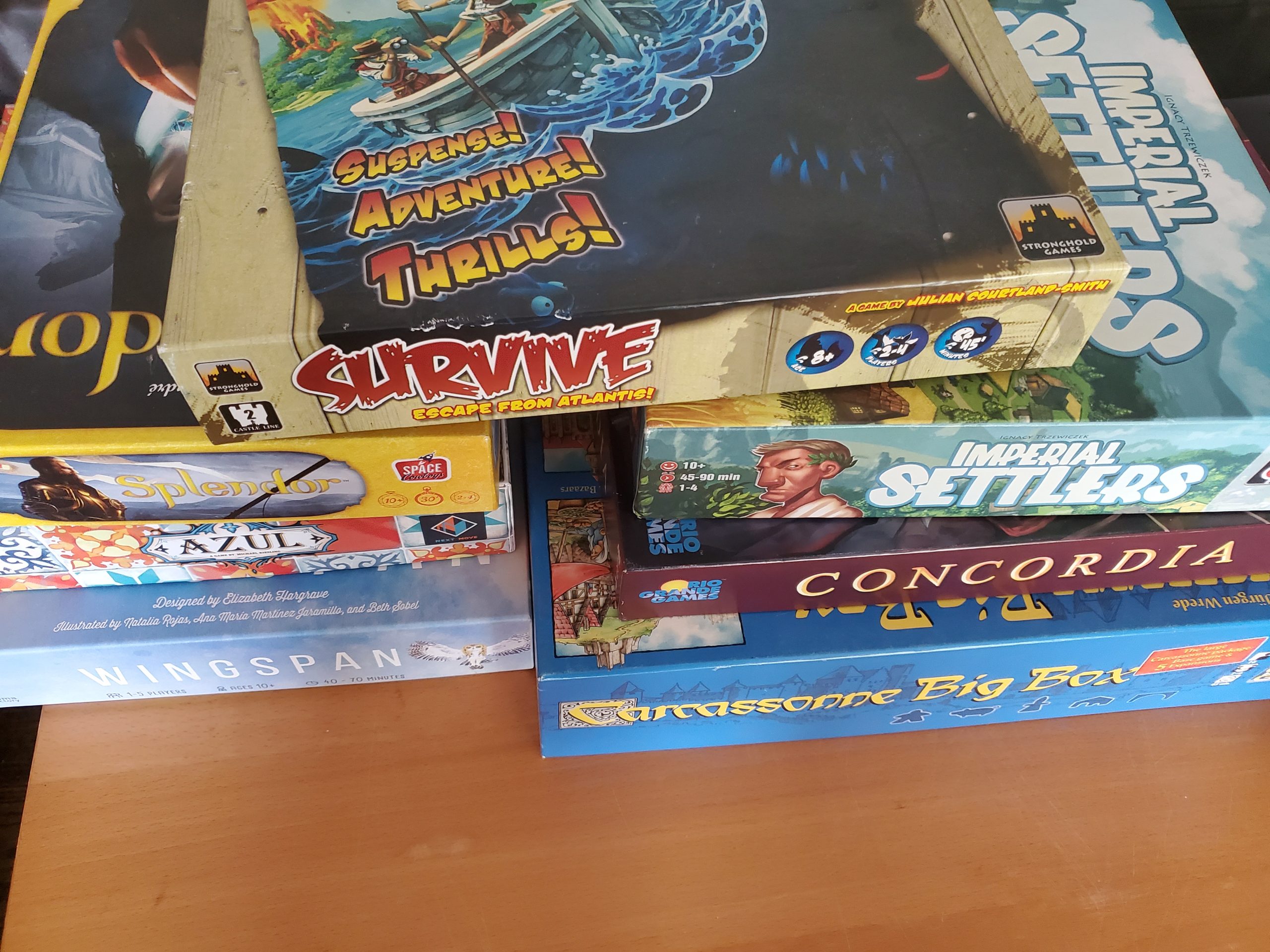

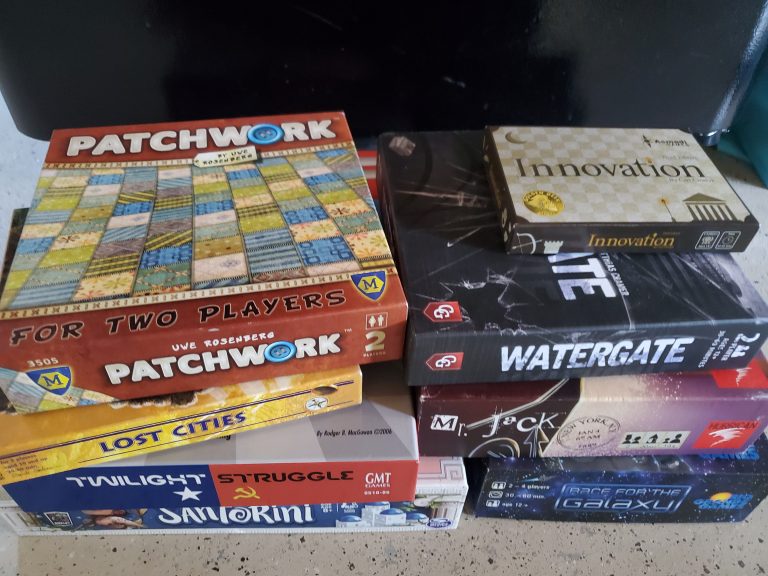


One Comment
Comments are closed.